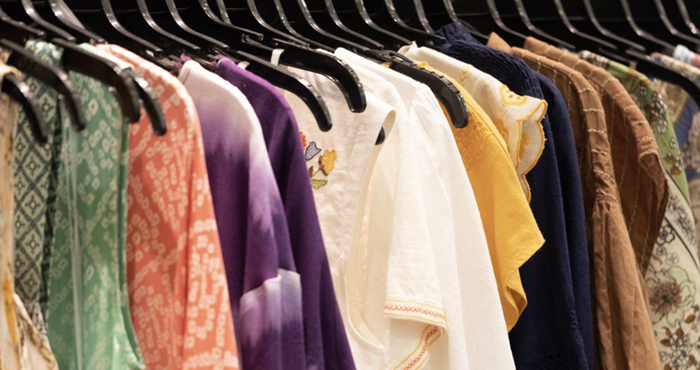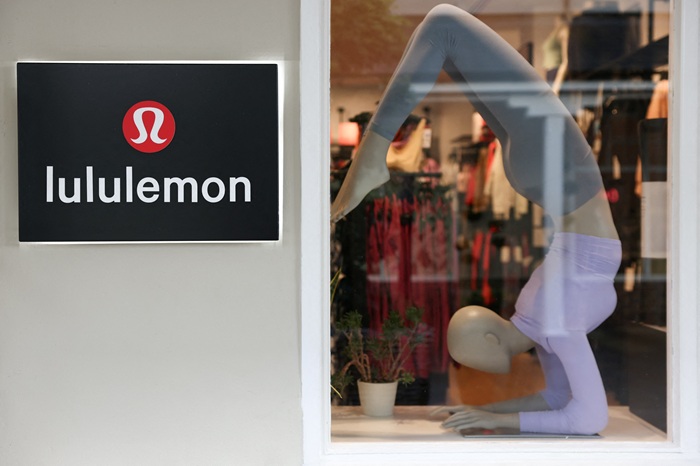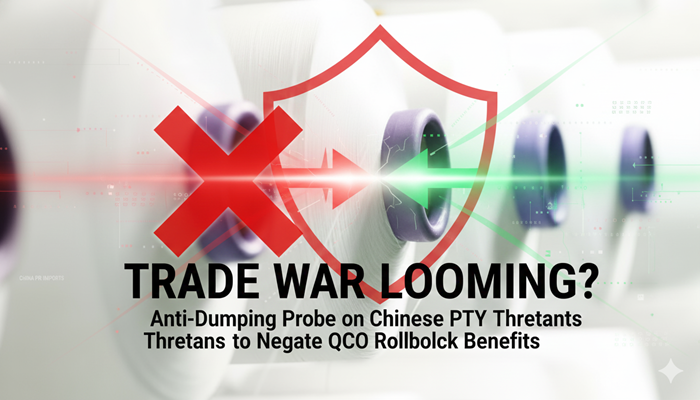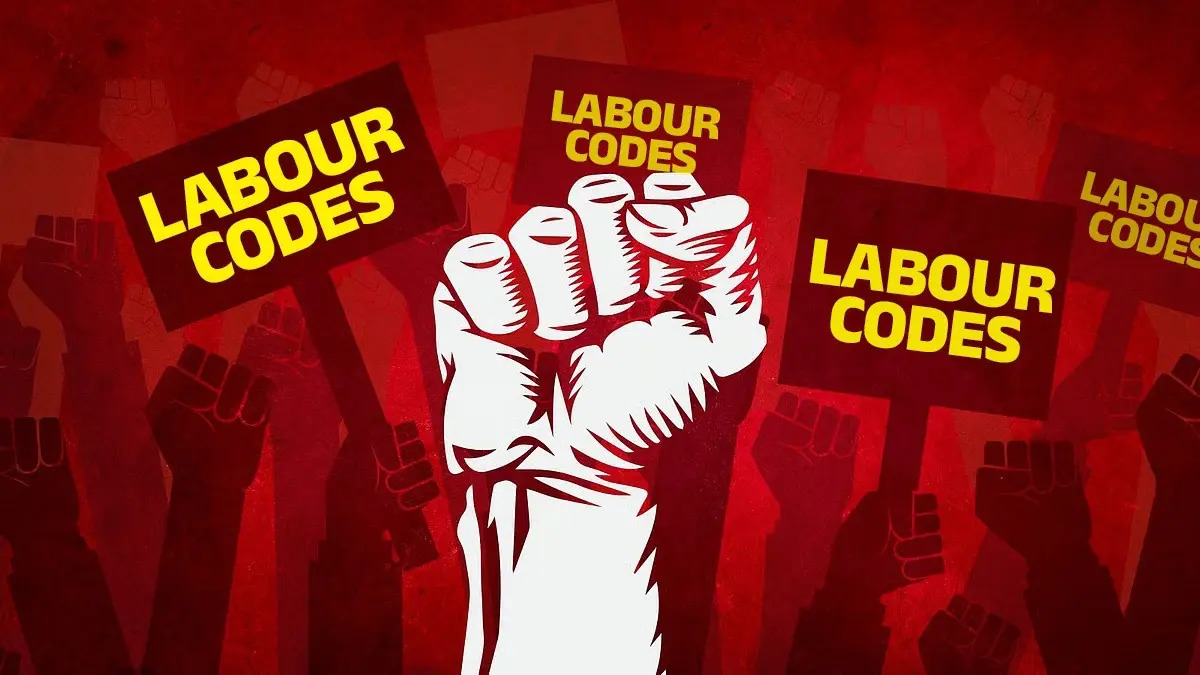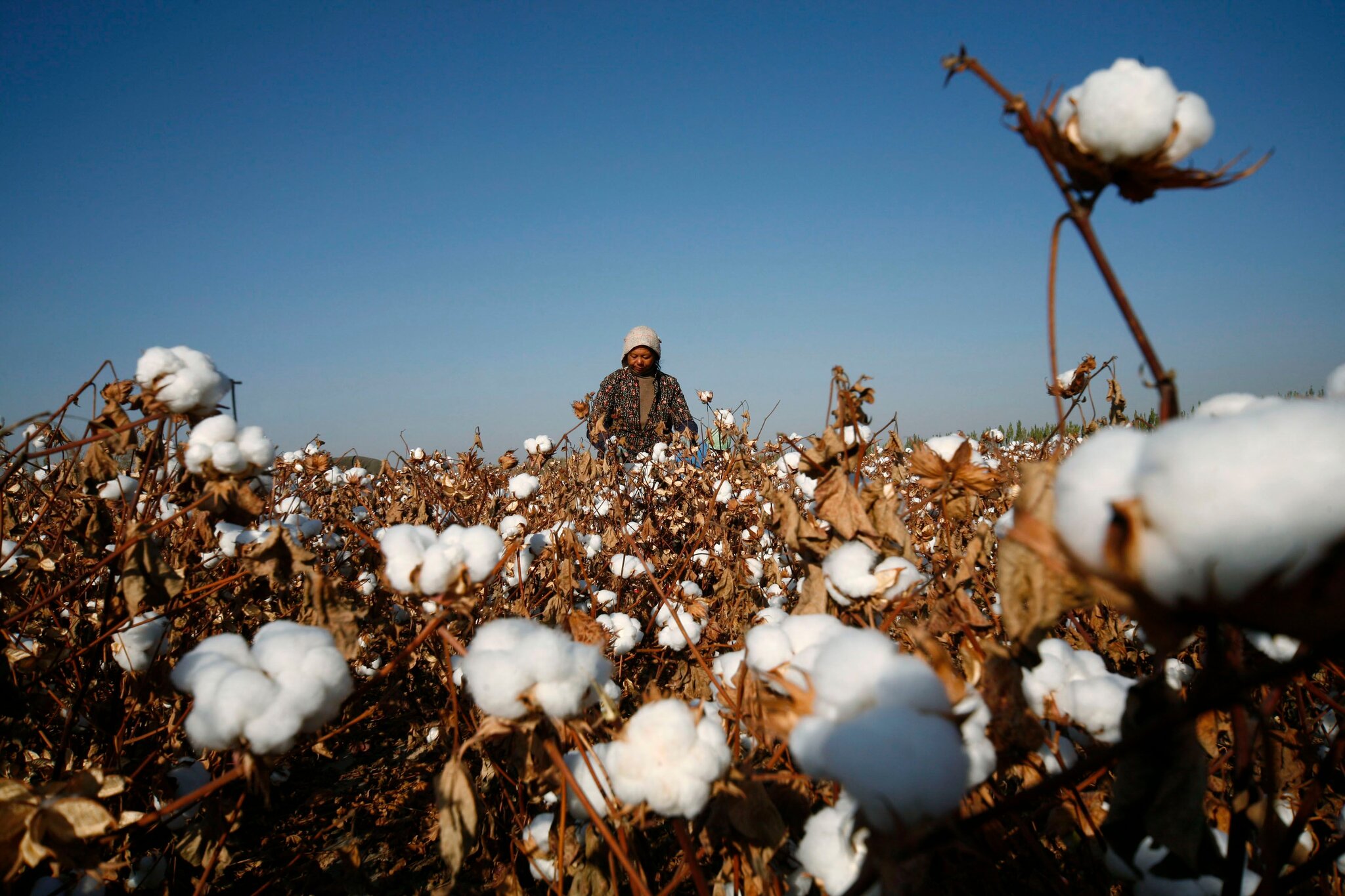FW
H&M Foundation, the non-profit-making organization, announced the second edition of the Global Change Award on September 1. The open competition has been instituted for encouraging research to shift the fashion industry from linear to a circular one. The foundation, personally funded by the Stefan Persson family, has allocated €1 million grant to five innovations that can re-invent the fashion industry. The last date of submitting application for the award is October 31.
Clothing made of citrus by-products, microbes that digest waste polyester and an online marketplace for textile leftovers are some of the five disruptive ideas that shared the first €1 million Global Change Award grant last year. The first edition of the Global Change Award had received more than 2,700 applications from 112 countries.
Karl-Johan Persson, board member of the H&M Foundation and CEO of H&M said that after having a look at so many fantastic innovations from around the world that had the potential to transform the fashion industry, his company decided to announce the next round of the Global Change Award. Making the fashion industry circular is not just about recycling. To encourage ideas from a broader scope Global Change Award 2016 has three categories open for applications: Circular business models covering ideas on how to reuse, repair, share, digitalize or extend the life of products.
Circular materials looking for ideas on new fibres, recycling techniques, leather substitutes etc. and Circular processes aiming to find new methods around chemicals, water and dyeing, as well as 3D printing, demand-driven manufacturing etc. Annually, an expert panel selects five winners that share a grant of €1 million and gets access to a one-year innovation accelerator provided by the H&M Foundation, Accenture and the KTH Royal Institute of Technology in Stockholm. Global public is then invited to distribute the €1 million grant between the five innovations through an online vote. The result of the vote garnered would be announced at a grand award ceremony in Stockholm in April 2017.
Hit by a rise in cross border tension, the textile industries in both Pakistan and India are in serious dilemma as cotton trade between the two countries has been in animated suspension as no new deals are being thrashed. However, one can see a bit of silver lining with Pakistan’s Cotton Commissioner Khalid Abdullah revealing that a low quantum of trade activity is still taking place.
The government has not asked importers to stop buying cotton from India but many of them are not buying on their own as a gesture of national solidarity. However, Indian exporters are refusing to sell the commodity at their government’s behest, although they know that they would be losers.
Pakistani spinners are the biggest buyers of Indian fibre. Imports of a lesser quantity by Pakistan this year could hurt Indian exports, raise their prices and help rival cotton exporters like Brazil, the United States and some African countries. And for the industry in Pakistan, buying the raw material from other sources may prove costly owing to long distance freight. In fact, the situation is in a wait-and see mode. Cotton trade between the two countries is worth $822m a year.
Suspension in cotton trade comes at a time when Pakistan’s cotton crop has recorded an overall decrease of 15 per cent over that of last year. This has added to the industry’s woes. Though Pakistan begins importing from September, but this time there has been little activity so far.
In fiscal year 2015-16, official trade between India and Pakistan was recorded at $2.6 billion with cotton being a major component. However, in the crop year that ended on September 30, Pakistan was India’s biggest cotton buyer after its own crop was hit by drought and whitefly pest. According to an estimate, Pakistan will need to import at least three million bales in 2016-17. On Oct 7, the Cotton Crop Assessment Committee (CCAC) estimated the output for 2016-17 stood at 11.039 million bales. Lower output was mainly due to effects of climate change on the crop, besides pests like pink bollworm and whitefly.
To help plug a growing deficit in supply, China may match its 2016 sales from state cotton reserves next year, it is gathered. Plans by the world's top textile market to sell off the huge reserves of cotton is being closely watched by the global market, with China holding more than half of the world's inventories after a years-long stockpiling programme.
Amid a surge in financial pressure and a change in policy, the country is now attempting to sell off those stocks. This summer, it sold about 2.5 million tons by way of auctions. This move has extended the sales by an additional month on higher demand from mills.
Zhang Jinguang of the economy and trade division at the National Development and Reform Commission urged the cotton reserves authority to carry out sufficient preparations to make sure that it was ready to release at least one million tonnes by March. China's recent round of reserve auctions led the United States Department of Agriculture to cut its estimate for global stocks earlier this week and raise its figure for Chinese consumption, suggesting that mill demand in China had been previously underestimated.
The move pushed ICE cotton futures to a one-week high. Analysts said, however, that import restrictions would limit benefit to exporters.
BRICS countries (Brazil, Russia, India, China, and South Africa) hope to double the size of intra-grouping trade to $500 billion within five years. This requires businesses and industry in all five countries to scale up their engagement. For one they have agreed on a tax and custom cooperation framework. In 2015, intra-BRICS trade stood at about $250 billion.
There is huge scope for intra-BRICS cooperation in infrastructure development and financing. The formation of a group of angel investors is one possibility. In the past year, BRICS has played an active role in shaping the global agenda for change and development. It has had purposeful and productive associations with Agenda 2030, the Paris Climate Agreement, and the Addis Ababa Action Agenda on Financing for Development. And it remains at the forefront of pushing change in global governance architectures.
In a world of new security challenges and continuing economic uncertainties, BRICS stands as a beacon of peace and promise. With the expansion of BRICS agenda, there is a need to enhance business cooperation in agriculture by way of sharing of best practices among members.
The Shanghai-headquartered NDB, which has completed one year of operations, had approved loans to the tune of $911 million for development of renewable energy sector in member countries.
In the last eight years, the cotton-based Indian textile industry has been facing acute crisis because of high volatility in cotton prices especially during the off season that starts from May to September. Though the cotton year is October to September, more than 80 per cent of cotton arrive in market between November and March.
Due to financial constraints and three months credit limit facility extended by banks, spinning mills are forced to procure cotton at high for at least five months. The stagnated growth in cotton textile industry and exports is caused mainly due to volatility in cotton prices. Since 2007, the industry has been pleading with the Central fovernment to announce cotton fibre security policy after removal of cotton from Essential Commodities Act and by extending a low cost working capital fund and ensure adequate stock to use ratio of cotton to have a level playing field in the globalised environment. However, so far no decision has been taken.
Against this background, a 19-member delegation led by Vanathi Srinivasan, State General Secretary, BJP, Tamil Nadu and M Senthilkumar, Chairman, The Southern India Mills’ Association (SIMA) met the Union textile minister, Smriti Irani and submitted a joint memorandum. The chairman, SIMA has stated that based on the collective decision taken by 26 textile Associations across the value chain in the country, it was unanimously decided to insist the government to direct the Cotton Corporation of India (CCI) to procure 70 to 80 lakh bales of cotton during the peak season when the Indian cotton price rules lower than the international price, retain cotton as buffer stock and sell this quantity only to actual users between May to September.
A digital textile printing conference will be held in the US, December 6 to 7, 2016. The program will feature the industry’s most well-known and respected experts presenting topics essential for those involved in digital textiles. The two-day event will deliver unprecedented content to conference registrants who will leave with a wealth of understanding and inspiration to take back to their respective jobs. Technology, color management, product performance, testing, design, and more are included in the jam-packed event.
The first day includes a manufacturer’s panel, color management for digital textiles, finishing, meeting your customer’s sustainability objectives, product testing for quality assurance, and research findings from North Carolina State University College of Textiles.
The second day includes designing for digital printing of textiles, fabric factors impacting digital printing, digital print inspiration and design, web-to-print, digital manufacturing, and more. Most commercially available fabric is rotary screen printed; each print run is typically several thousand yards. The high minimums are due to the cost and time required to prepare a unique set of screens, with each color in a design requiring a separate screen.
The main advantage of digital printing is the ability to do small runs of each design because there are no screens to prepare.
The just concluded London Fabric Fair drew visitors and participants from students to high-end designers. It attracted a steady stream of visitors across two days (October 12-13). Exhibitors were in awe of the busy first day that had packed stands as buyers came to source luxury fabrics with minimum orders.
The show, which turns 15 next year, offered more than 80 collections from the UK, France, Italy, the US and Japan while the exhibitor numbers rose from 42 to 44 set across two floors. Buyers came from firms including Harrods and Jasper Conran, while fashion designers, tailors, bridal specialists, costume designers and students went through a range of woollens, silks, laces, cottons, prints and leathers for daywear, evening wear, bridal wear, lingerie, children’s wear and accessories. Besides fabrics, suppliers also showcased buttons, zips and labels and demonstrated sampling and small-run garment manufacturing capabilities.
Rieter’s combing machines have achieved highest standards of productivity in the world. Producer of textile machinery and automobile components, Rieter is based in Winterthur, Switzerland. The company’s technological advantage is based on optimal interaction between machine and technology. According to company sources, there are various technological and economic advantages in using Rieter’s set of combing machines.
The E 36 Omega lap is the most economical combing machine, the company said, adding that an increase in production of 20 per cent to over 600 kg/h at a constant speed of up to 230 m/min has been achieved. At such a high production rate, the Omega lap is far superior than conventional machines.
The influence of the Omega lap, on the economic performance of a unit’s combing section, is great. The high production allows a reduction in the number of preparatory machines which noticeably reduces the number of can changes while fewer personnel are needed.
As an example, the company stated personnel requirement calculations for a combing set in a compact spinning facility with 76,000 spindles. Compared to other machine manufacturers, personnel requirement could be reduced by three workers.
The strength of the E 86 comber lies in a high level of cleaning as well as excellent running performance, with high nip rates. The E 86 achieves fewer imperfections in the yarn (thin places, thick places, neps) at the same noil removal level compared to combers made by other manufacturers. The high degree of cleaning has no effects on fibre quality, which means that fibre length remains unchanged and thus yarn tenacity remains at a high level.
Faced with a lot of harassment from authorities for two decades even for minor inadvertent mistakes made on packets when products are sold as ‘packaged commodities’, hosiery manufacturers can now expect some relief. Following repeated representations of hosiery manufacturers, the Director of Legal Metrology at the Centre has now issued fresh directions on the issue. The new directive issued to Controllers of legal Metrology in states has asked them to make field level officers understand the differences in circumstances when certain goods were packaged in bunch like hosiery products and sold piece-wise in retail vis-à-vis general packaged goods like edible items which cannot be opened and act accordingly while imposing penalties.
Commenting on the move, South India Hosiery Manufacturers Association joint secretary R Damodaran said this has come as a big relief at a time when manufacturers have been asking for an ordinance to exempt hosiery products from the Packaged Commodities Rules 2011 itself to avoid misinterpretations.
Earlier since products were classified under the packaged commodities rules, the authorities used to penalise manufacturers even when a vendor, to whom the products were sold in bulk packets, subsequently sold it piece-wise. Another grouse manufacturers have been is that hosiery products are never bought by customers in bulk and consumers usually prefer one or two inner garments from the main packet that contains large number of pieces packed together for convenience. Hence, these should be treated as pre-packaged commodity and not as a packed item, they say.
C&A Europe has launched a new down puffer jacket collection, its first such collection to be certified by the Responsible Down Standard (RDS). The jacket was developed by Textile Exchange.
The new collection strengthens C&A's public commitment to the responsible sourcing of down and feathers. The company has now confirmed that from fall 2016 onwards, all of the down and feathers in its products will be RDS-certified. The new range will be available in all C&A stores throughout Europe and online.
The Responsible Down Standard (RDS), an independent, voluntary global standard owned by Textile Exchange and certified by third party certification bodies, encourages best practices in welfare and prevents harmful practices such as force-feeding and live-plucking. In addition, it enables traceability from hatchling to the final product.
With inputs from animal welfare groups, industry experts, brands and retailers, RDS has been developed over the past three years. It is said that RDS has been developed by all applicable quality principles. As such, it is applied to all down supply chains and provides the strongest chain of custody assurance.



